Black Women Entertainers in a Revolutionary Time: An Interview with Historian Ruth Feldstein
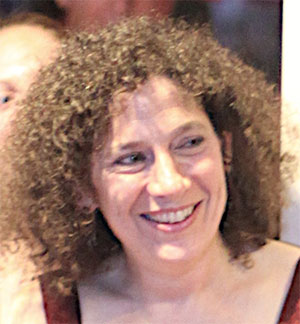
Dr. Ruth Feldstein
“Culture
was a key battleground of the civil rights movement,” writes
historian Dr. Ruth Feldstein who explores race and gender as well as
the connection of art and activism in her compelling new study, How
It Feels to Be Free: Black Women Entertainers and the Civil Rights
Movement (Oxford University
Press).
Dr. Feldstein’s book focuses on the activism and influence of six prominent black performing artists: Lena Horne, Nina Simone, Abbey Lincoln, Miriam Makeba, Cicely Tyson and Diahann Carroll. As these women entertained America they also spoke out in various ways for equality and justice in support of the civil rights struggle.
The trailblazer, brilliant vocalist and star of stage and screen Lena Horne, led the way with her performances in the 1930s and 1940s that introduced wide audiences to a fresh and novel talent, and her activism that grew, crossed many divides, and matured in the 1960s. In the shadow of Horne, the five younger artists each broke new ground in her own way to transform American culture and to reshape outdated views of race and gender, forging black power and evolving feminism.
In her sweeping account, Dr. Feldstein details the work and struggle of each of these women who achieved fame in male-dominated cultural industries while resisting racist and sexist stereotypes. She discusses the how South African singer Miriam Makeba connected the American civil rights movement with the anti-apartheid campaign in her native land; how jazz icon Nina Simone confronted audiences with the brutality of racial discrimination in her fiery, moving songs; how the outspoken vocalist and actress Abbey Lincoln broke new ground in music and film; how actress Diahann Carroll made history as television’s Julia in 1968 and then struggled with the ways she was typecast; and how award-winning actress Cicely Tyson advocated for human rights and for dignified portrayals of African Americans on screen and television as she starred in renowned films such as Sounder and The Autobiography of Miss Jane Pittman.
How It Feels to Be Free has been praised for its originality, insight, and its blending of political and cultural history. Dr. Daphne Brooks of Princeton University wrote: “By placing black female musicians and actors at the center of Civil Rights history, Ruth Feldstein has written a tremendously important study that challenges readers to consider the imaginative activism of artists who performed progressive representations of black womanhood. How It Feels to Be Free takes readers on a critical journey across the mid-twentieth century freedom struggle by way of women performers who rehearsed, remixed, and renegotiated civil rights and black power politics, as well as emergent feminisms." And Peniel E. Joseph, author of Stokely: A Life commented: "How It Feels to Be Free stands out as an enormous act of historical recovery. Ruth Feldstein masterfully illuminates the way in which black women entertainers actively participated in the civil rights struggle and helped to transform American and international race relations. A powerful and thought provoking book that will change the way we look at gender, civil rights, and the black freedom movement."
Dr. Ruth Feldstein is an associate professor of history at Rutgers University, Newark. Her teaching and research focus on the intersections of gender and race and the relationships between culture and politics. Her first book was Motherhood in Black and White: Race and Sex in American Liberalism, 1930-1965, an intellectual and cultural history of liberalism and race from the New Deal to the Great Society.
Dr. Feldstein graciously responded by email to a daunting series of questions on her new book.
Robin Lindley: How did you come to write about the civil rights movement through the stories of this group of black female entertainers?
Dr. Ruth Feldstein: For one, I wanted to tell the stories of women whose voices have not been heard. While it is a bit ironic to say that about amazing vocalists like Lena Horne, Nina Simone, or Abbey Lincoln, these and other women have been marginal to our political histories of these decades. Theirs are not the melodies that we tend to hear at Martin Luther King Day celebrations each January. Yet there was far more to civil rights than “I have a dream,” and there was far more to culture and civil rights than “We Shall Overcome.”
I also wanted to consider how politics and social movements were relevant to the thousands upon thousands of Americans and non-Americans who did not (or today, do not) consider themselves particularly political. After all, plenty of people never marched or boycotted or worked on behalf of any particular candidate in the late 50s into the 70s. Nevertheless, they encountered black activism when they bought certain albums or listened to certain songs or watched particular films or television shows. In other words, we need to expand the parameters in which we see people acting politically. When we do so, we can see that these six trailblazing women were critical to what were arguably the two most transformative social movements of the twentieth century: civil rights and women’s liberation.
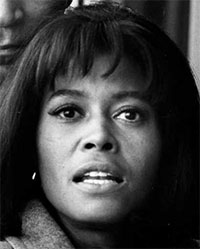
Abbey Lincoln
Robin Lindley: How did you choose the six women you focus on in the book? What connections did you find in terms of the civil rights movement?
Dr. Ruth Feldstein: That’s a great question, and plenty of readers offer me lists of their favorites who could have been included. I chose to focus on these six women because of their diversity and because of what they had in common.
In terms of their diversity, the book traverses television and film, jazz and pop music, the NAACP and the Black Panthers, Selma and South Africa. That is, I incorporated women entertainers who worked across different cultures and industries—and not just women in jazz or women on television; I also wanted to tell a story that cuts across national boundaries and typical political divides of liberalism and radicalism.
On the other hand, even with these differences, the six women I write about did have a lot in common: they all had relationships to organized political movements for racial equality; they all were popular within, and beyond, the United States; and they were all were political subjects and intellectuals and not “merely” entertainers. Perhaps of greatest significance, though, they shared a loosely connected community. The women in How It Feels To Be Free were essential to a larger interracial group of activists/entertainers that came of age culturally and politically in New York—primarily in the Village and in Harlem--in the late 1950s. Their communities included HarryBelafonte, James Baldwin, Lorraine Hansberry, Maya Angelou, and Ossie Davis,to name just a few. The book is a history of that urban subculture and its gendered dimensions at the same time that it offers snapshots of particular figures.
This is not to say that there were not many other black women entertainers from this period whose careers mattered to the civil rights movement. I feel lucky to have been researching and writing this book when other writers and scholars have told wonderful stories about other women, and I look forward to reading more of this exciting work.
Robin Lindley: What was your research process? Did you have an opportunity to interview any of your subjects?
Dr. Ruth Feldstein: My process was to research and write, research and write, chapter by chapter; initially, each chapter felt relatively independent. As the process continued over time, I started to see more and more links between and among the women. In fact, they were connected to each other in all sorts of ways. But this wasn’t necessarily obvious at the outset because critics from the late 1950s—when Nina Simone, Miriam Makeba, Abbey Lincoln, Diahann Carroll, and Cicely Tyson all came of age professionally—wrote about each one in isolation. It took time for me to see that they were an emergent collectivity of ambitious black women performers who together were building their careers, innovating, and making political commitments.
I made a conscious decision not to interview the women I was writing about. I made that choice because I really wanted to listen in on the conversations that were happening in that period of time. My main questions were about how people at the time made these women and their careers meaningful—how the women worked to represent themselves and how other people reacted to them and made them celebrity-activists. I felt that talking to them decades later would certainly be incredibly interesting, but would not necessarily help me to answer those questions and, in fact, could possibly distract me from those questions.
Robin Lindley: I think many Americans think first of male leaders such as Dr. King and Malcolm X or Stokely Carmichael or male entertainers such as Harry Belafonte and Sidney Poitier when they think of the sixties and the civil rights movement. What are a few things you would like others to know about the role of women in the movement?
Dr. Ruth Feldstein: I absolutely agree with you, Robin. The story of the civil rights movement—at least the one that I learned in grade school, high school and even into college, and the one that my students tell me they are still getting in high school—tends to revolve around male leaders and songs like “We Shall Overcome” as the ubiquitous background soundtrack. Occasionally a woman—usually Rosa Parks—shows up in that story; but even then she tends to appear as the “tired, old seamstress,” who “suddenly” decided not to give up her seat on a bus in Montgomery (this despite her decades of activism). But when we bring black women entertainers center-stage, the history of civil rights looks different.
For example, in 1963, just a month after the March on Washington and Martin Luther King’s iconic “I Have a Dream” speech, Nina Simone wrote the song “Mississippi Goddam.” The song had an upbeat tempo, but offered incredibly incendiary lyrics filled with anger. Simone rejected the notion that race relations could change gradually and shattered the assumption that African Americans would patiently use the legislative process to seek political rights. She even declared, “But this whole country is full of lies, You’re all gonna die and die like flies.”
In a moment that many people today remember as the high water mark of liberal, interracial, nonviolent, church-based activism that culminated in passage of landmark civil rights legislation, Simone dramatically departed from conventional wisdom and imagined another kind of black freedom. A few years later, the vision that she offered in “Mississippi Goddam” would become known widely as black power.
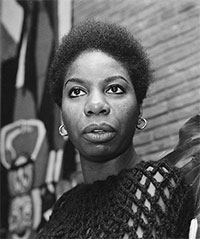
Nina Simone
Contrary to the neat historical trajectories which assume that black power only arose in the late 1960s, Simone’s album makes clear that black power perspectives were already taking shape and circulating widely years earlier—in organizations, but also on vinyl albums that music fans played around the world. So by listening to this woman’s voice, we can reperiodize civil rights, and mess up what is sometimes an overly schematic story of civil rights versus black power.
But there’s more to it than that. When Simone denounced racism and those who called on black Americans to wait patiently for progress, she did so in ways that emphasized female power. In one verse, Simone sang:
Yes, you lied to me all these years
You told me to wash and clean my ears
And talk real fine, just like a lady
And you’d stop calling me Sister Sadie.
But this whole country is full of lies
You’re all gonna die and die like flies
I don’t trust you any more
You keep on saying “Go Slow.
When Simone rejected the impulse to “talk like a lady” she was saying that black women did not have to focus on appearance, diction, and manners—to “wash and clean my ears,” to “talk like a lady” as she put it—to claim their rights; she argued that doing so did not stop whites from calling black women “Sister Sadie” instead of their real names. She was saying that women should not have to behave a certain way to be recognized as deserving. Here and in other songs, Simone staged an assault—simultaneously—on racism and on expectations of female propriety. For her, black power was about black female power.
This is just one example of how listening to women allows us to reconceptualize as well as reperiodize histories of the movement.
Robin Lindley: Lena Horne is a pivotal and overarching figure in your book. How did she influence the civil rights movement and the younger women you profile?
Dr. Ruth Feldstein: Lena Horne was older than the other five women in How It Feels to Be Free. In the 1930s and 40s, when Makeba, Simone, Carroll, Lincoln were kids, really, Horne challenged long entrenched assumptions about black women. For example, in 1941, she became the first African American woman to sign a contract with a major Hollywood studio, one in which MGM executives acceded to her demand that she not play any maids on film. She rejected definitions of black women as either sexualized Jezebels or as caretaking and subordinate Mammies. These were powerful and deeply ingrained images that had boxed in all black women for centuries. Instead, Lena Horne made it possible for fans across lines of race to imagine a black woman as glamorous, and as an unavailable object of desire. In many respects, then, Horne created the template for the modern and glamorous politicized female black celebrity.
In the late 1950s, younger black women encountered, played with, and bent sometimes beyond recognition that template. Diahann Carroll was a singer and actress who invited numerous comparisons to Horne. Starting in the 50s, Carroll worked to update and maintain Horne’s insistence that that a black woman could simultaneously be respectable, sexual, and glamorous. Other black women performers also grappled with Horne’s image. But they did more to redefine celebrity culture and they transformed meanings of glamour for black women.
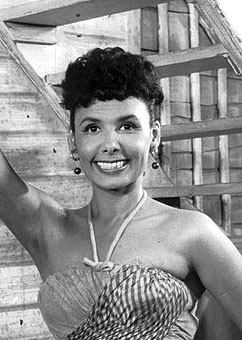
Lena Horne
Robin Lindley: Miriam Makeba was South African but performed extensively in the US. Wasn’t she important in terms of educating many about international liberation movements and conditions in the US?
Dr. Ruth Feldstein: Miriam Makeba was a South African singer who came to the U.S in 1959. Within days of arriving, she made her American debut and was a big sensation. But in contrast to her good friend, Nina Simone, Makeba insisted that she was “just” an entertainer, and she avoided confrontations and overtly political lyrics. Nevertheless, she was able to make connections for her audiences in the United States between domestic black activism and anticolonial struggles. Americans who knew little about Africa beyond Tarzan paid attention to anti-apartheid activism when they saw the exiled Makeba on the popular Steve Allen television show and in the commercial mainstream in the early 1960s. In all sorts of ways—with her music, her lyrics, her appearance, her wardrobe, with what she did and said on-stage and off—she was able to get white and black Americans to see and understand black South Africans who lived under apartheid rule. Without ever using the phrase “black power” in this period, Makeba affirmed the power of blackness and affirmed the power of Africa; she offered a vision of black power for women and men across borders.
Robin Lindley: Actress Cicely Tyson may be best remembered now for her groundbreaking roles in Sounder and The Autobiography of Miss Jane Pittman, but she was also deeply committed to the civil rights movement. How do you see Tyson’s role?
Dr. Ruth Feldstein: Tyson’s commitment to the civil rights movement was not separate from her acting career; in fact, her commitment to civil rights expressed itself directly in relation to the groundbreaking roles she worked so hard to get. For example, she avoided musicals because she felt that so many white consumers assumed that black performers were “naturally” drawn to those roles, and she refused to adhere to those assumptions. Starting in 1959, when she played the part of a young African woman on the television drama Camera Three, Tyson wore her hair in a short, cropped Afro. She maintained her short Afro in her role as a secretary to a liberal white social worker on the critically acclaimed (but short-lived) television drama on CBS, East Side, West Side (1963). It was “my way of picketing” she later said about her hair.
Tyson also did not work for long stretches—in part because she was so selective about what parts she would accept and because she felt so strongly that it was important to represent black women in certain ways. And when her career did take off in the 1970s, many of her most significant roles engaged with the political debates going on around her—from welfare to police brutality, to name just two—even in stories like Sounder that were set in the past.
Robin Lindley: How did these artists affect the feminist movement?
Dr. Ruth Feldstein: The women I write about did not necessarily call themselves feminists. But gender was critical to their vision of black freedom. They offered critiques and made demands that became central tenets of feminism generally and of black feminism specifically. I’ll offer just a few examples, but there are many to choose from.
Abbey Lincoln’s career started as in nightclubs; she wore tight fitting low cut gowns and was known as the “sepia Marilyn Monroe.” But by the late 1950s, she had rejected that music and that sexualized image. She had realized “how wonderful it is to be a black woman,” she said, and with that, opted for more experimental jazz vocals and a very different personal style.
A few years later, in 1968, Lincoln, known for her connections to black nationalist politics and her experimental jazz vocals, co-starred alongside Sidney Poitier in the film, For Love of Ivy. Ivy, a young woman domestic (Lincoln in a straight-haired wig), wants to leave her job, is financially independent, hard-working, sexually active, and, as she explains to the Poitier character on their first date, uninterested in marriage. The sex scene between the two stars was one of the first times a commercial Hollywood film featured unmarried black characters in an elegant and romantic setting. “Nobody asks what I want,” declares Ivy, toward the end the film, as she protests the ways that both the white family and Poitier’s character try to control her.
Off-screen, Lincoln talked about the film in ways that highlighted the strength and dignity of working class black women. She discussed the limited options they had for work, and spoke out about her own experiences as a domestic. In other words, Lincoln put the character’s quest for independence and autonomy—economic andsexual—at the center of the story. She anticipated a black feminist perspective that took into account the aspirations and experiences of working-class black women.
In another example, in South Africa, Miriam Makeba was nicknamed the “nut brown baby.” She disapproved of the U.S.-made skin-lighteners that were so popular among her peers in the early 1950s and refused to appear in advertisements for these products that sexualized and celebrated light skinned black women.
Coming back to Nina Simone, many of what we think of as Simone’s civil rights songs emphasized female power. In addition to “Mississippi Goddam,” “Pirate Jenny,” for example, was a song about a poor working class black woman’s fantasies of violence; she feels empowered as she imagines enacting revenge against the white townspeople who watch her “gawking” as she scrubs floors. In the song “Four Women” (1966), Nina Simone sang about four different types of black women from different periods in U.S. history, each of whom wrestled with the combination of racism, sexism, and color consciousness. The final woman in the song, “Peaches” would “kill the first mother I see” because her “life has been rough.” “Four Women” became one of Simone’s most popular songs.
So too, Cicely Tyson’s choice to take on distinctly unglamorous roles had everything to do with both race and gender. Sounder’s emphasis on a loving black family directly countered images of black families as “dysfunctional,” and as caught in a “tangle of pathology” as Daniel Patrick Moynihan had put it in 1965. Tyson talked about this when she promoted the film: If it were not for unified, loving black families, she said “we would not be where we are today as a race of people.”
Tyson was also countering images of black women—and black mothers specifically--that were popular in the late 60s early 70s: as promiscuous “bad mothers” who were only concerned about getting the next welfare check. After seeing Sounder, one white woman wrote to Tyson that “I never knew that kind of love went on between a black man and woman. I thought you were sexual animals.” This comment is just one indication that Tyson’s performances were never just about race and civil rights, or just about gender and women’s liberation, but were always about both. Tyson’s portrayal of Rebecca spoke to how intertwined issues of race and gender were in the performance and consumption of black womanhood.
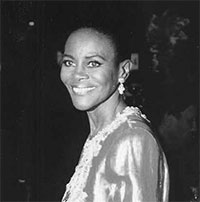
Cicely Tyson
Robin Lindley: Didn’t each of these women artists suffer career setbacks because of their political expressions and promotion of black activism?
Dr. Ruth Feldstein: The women I write about were enormously popular, in the United States and around the world. Miriam Makeba sang at John F. Kennedy’s birthday party celebration at Madison Square Garden in 1962 (where Marilyn Monroe made an even more famous appearance!), and was the first South African singer to receive a Grammy award; Diahann Carroll won a Tony award for No Strings in (1962); and Cicely Tyson and Diahann Carroll each received Oscar nominations for best actress in a lead role for their performances in Sounder (1972) and Claudine (1974).
At the same time, it is worth emphasizing the risks that black women took when they straddled the worlds of culture and politics. After one influential critic accused Abbey Lincoln of being a “professional Negro” for singing songs that had political content on the album Straight Ahead in 1961, she did not record an independent album for over a decade. Miriam Makeba was exiled from her home country of South Africa for decades because of her associations with anti-apartheid activism. She was initially very successful in the United States but, when she married Stokely Carmichael in 1968—an activist known for his connections to black power—she was effectively blacklisted in the American entertainment industry. Nina Simone faced criticism and threats of censorship when she wrote and performed songs like “Mississippi Goddam” that challenged white Americans and denounced interracialism. Cicely Tyson waited years between parts, and almost gave up acting altogether, because she refused to accept roles that she felt sexualized or otherwise demeaned black women. When Diahann Carroll—long associated with glamour and high fashion—took on the part of a working class, single black mother (in the film Claudine, in 1974), she earned an Academy Award nomination, but she also faced a tremendous amount of criticism—for “slumming,” for being incapable of playing the part of a poor black woman in an “authentic” manner, and more. She felt her career floundered after that.
It was never easy, and the women I write about negotiated their ambition and talent and their political commitments in all sorts of ways.
It’s also worth adding that this pattern of silencing them persists today. Nina Simone has become an increasingly iconic figure, especially since her death. A few years ago, my daughter’s public school teacher asked me to come in and talk to the class about music and civil rights. I prepared a program for them about her and about “Mississippi Goddam.” The morning I was scheduled to go in, I got a call from the assistant principal saying that they would not let me play that song to middle schoolers. “Mississippi Goddam” remains deeply controversial in some places.
Robin Lindley: One interesting theme was how several of these black women challenged mainstream white standards of beauty—and that seems an important part of this story. How did some change their appearance and how did white audiences respond?
Dr. Ruth Feldstein: That’s a great point, Robin. All of the women I write about were involved in a process of politicized self-fashioning. This was a process in which race and femininity played intersecting parts.
In the 1940s, for example, Lena Horne became known as the first “black pin up girl.” It’s easy for us to forget that in the 1940s the very idea of “beauty” was racially specific. A black woman couldn’t be a “sex symbol,” according to this twisted racial logic, because for centuries, so many whites believed that black women were inherently available to white men. But Horne said no; through her appearance, she claimed—and was granted access—to the category of beauty. Lena Horne made it possible for fans across lines of race to imagine a black woman as glamorous, as someone who white and black men could look at but not have.
Twenty years later, Makeba, Simone, Lincoln, and Tyson also insisted that how they looked mattered to their racial politics. But in contrast to Horne who claimed that black women had access to definitions of beauty and glamour that historically were associated with whiteness, they did more to transform or reject these definitions of beauty altogether. Hair was one of the crucial props that that they drew on to do so.
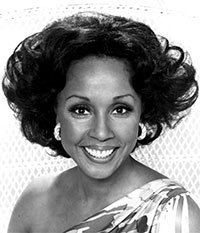
Diahann Carroll
In the late 1950s, for example, when singer Abbey Lincoln left the world of nightclubs and declared that “I demand that I be respected as a dignified Negro woman,” she simultaneously embraced modern jazz vocals and started to wear her hair natural. Similarly, starting in 1959, Tyson also wore her hair in a short, cropped Afro. Nina Simone wore her hair in dramatically different styles from one performance to the next, including straight-haired wigs, but as early as 1961 these styles included a natural Afro style. In South Africa in the fifties, Miriam Makeba had refused to appear in enormously popular ads for skin lighteners; from her opening night at the Village Vanguard in 1959 and during all of her years of celebrity in the United States, she refused to straighten her hair—opting instead for what she called her “short and woolly” style.
These women—and others, it’s worth adding, including Odetta, Melba Liston, and Maya Angelou, to name just a few—were not glamorous in the ways that Lena Horne had carved out and claimed that category. But they redefined glamour in the context of their politics. They insisted that how they looked made them desirable and desiring—and political—black women.
Robin Lindley: These stories resonate today—a half century later— as Americans continue to grapple with issues of race, the role of women, voting and other civil rights, and more. How do you see that resonance now?
Dr. Ruth Feldstein: I think that the question of who gets to tell black women’s stories, how those stories should be told, and what these stories mean are very much with us. We see this in so many places—from debates about Beyonce, to fierce disagreements about Lupita Nynong’o’s wardrobe and body and hair, to questions about Michelle Obama’s arms. I also think that black feminist criticism has flourished. There are many brilliant black women writing and thinking and speaking about these questions of race and women and sexuality and popular culture. They’re doing so in and out of the academy and making tremendous contributions to conversations about these critical issues.
Robin Lindley: Is there anything else you hope students of history and other readers take from your book?
Dr. Ruth Feldstein: I hope that readers see that history is messy and complicated, and that not everyone or everything “fits” into the categories we’ve established as “important.” I also hope that readers see that Americans and non-Americans have expressed political demands imaginatively as well as with marches and boycotts, and that politics did, and still can, happen in what might seem to be unlikely ways and unlikely places.
Robin Lindley: Thank you so much Dr. Feldstein for sharing your insights on these accomplished artists and the civil rights movement.
